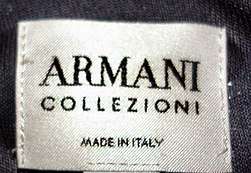Designer label


The term designer label refers for clothing, luxury automobile manufacturers and other personal accessory items sold under an often prestigious marque which is commonly named after a designer, founder or location where the company was founded such as BMW. The term is most often applied to luxury goods. While members of the upper middle class, or the mass affluent, are perhaps the most commonly targeted customers of these designer labels, some marquees—such as Cartier, Rolex, Montblanc and the haute couture — tend to a wealthier customer base. But almost every designer brand has merchandise that middle-class wouldn't normally be able to afford such as exotic skins, furs and hides, limited edition pieces, or things simply priced higher. Designer Label companies use their smaller and cheaper merchandise, aimed at the middle class, such as wallets, fashion jewellery, key-rings and small accessories, to make the majority of their income, whilst the more expensive pieces such as haute couture, high jewellery, hand-bags, shoes and even furnishings are usually reserved for the wealthier upper-class clientele.[1]
A lot of big designer labels focus on haute couture and marketing while licensing the production of their cheaper merchandise to others. In the eyewear industry for example brands like Burberry, Chanel, Armani and Prada license their brand names to market leaders like Luxottica.[2] Smaller designer labels such as AJO Studio, Brownstone or Nirvan Javan tend to focus on a specific industry and therefore often produce and distribute the products themselves.[3]
Many department stores themselves may be considered designer labels, such as Neiman Marcus, Harrods, David Jones and Daimaru.
Designer labels are not only restricted to the fashion design industry. Many car and motorcycle companies such as Rolls Royce, Harley Davidson and Mercedes Benz are regarded as designer labels. These companies make their vehicles to a higher standard than the average manufacturers and many other attributes such leather used in the upholstery, woodwork and paneling, high levels of technology, extra safety and speed are employed to make for a better product. These vehicles are also in high demand all over the world, and waiting lists may be applied to some models such as the Rolls Royce Phantom and the Bugatti Veyron.
Many people consider designer labels to be a status symbol.
Some research indicates that products with designer labels on them are perceived as higher in quality and fashionability than the same products without designer labels.[4] Other studys show evidence that brand names do influence consumers perception of price but not of quality of the products.[5]
The relationship between consumer products and social status is highly debated.[6]
References
- ↑ Jean-Noël., Kapferer, (2012). The luxury strategy : break the rules of marketing to build luxury brands. Bastien, Vincent. (2nd ed.). London: Kogan Page. ISBN 0749464917. OCLC 778828666.
- ↑ "Eyewear Brands: our glasses". Luxottica. Retrieved 2017-10-31.
- ↑ "Collection - NIRVAN JAVAN". Retrieved 2017-10-31.
- ↑ Davis, Leslie L. "Effects of Physical Quality and Brand Labeling on Perceptions of Clothing Quality". Perceptual and Motor Skills. 61 (2): 671–677. doi:10.2466/pms.1985.61.2.671.
- ↑ Forsythe, Sandra M. (2016-07-25). "Effect of Private, Designer, and National Brand Names on Shoppers' Perception of Apparel Quality and Price". Clothing and Textiles Research Journal. 9 (2): 1–6. doi:10.1177/0887302x9100900201.
- ↑ Ehrenreich, Barbara (1989). Fear of Falling, The Inner Life of the Middle Class. New York, NY: Harper Collins. ISBN 0-06-097333-1.